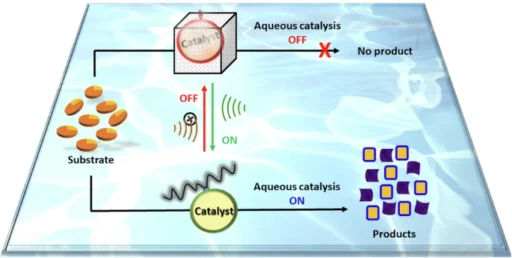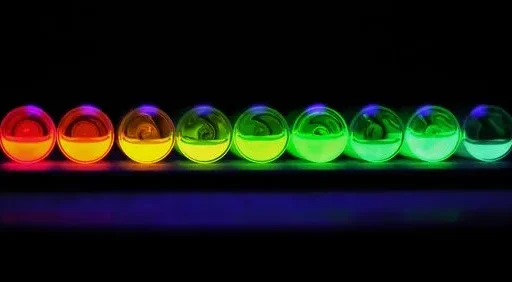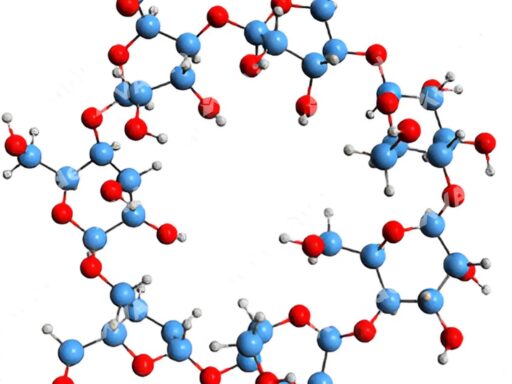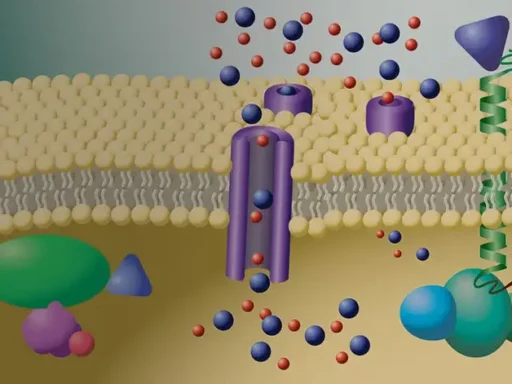Table of Contents
Organocatalysis has transformed the discipline of chemistry by providing a method to perform extremely efficient and selective reactions without reliance on metal-based catalysts. The new method of mechanical force-switchable aqueous organocatalysis adds an intriguing element by letting scientists control the catalytic process using mechanical force. This paper will explore the ideas underlying this new technique, its advantages, and future ramifications for green chemistry.
Overview of Organocatalysis:
Aqueous Organocatalysis fundamentally entails using tiny organic molecules as catalysts to expedite chemical reactions. In contrast to conventional catalysts that typically depend on metals or enzymes, organocatalysts are devoid of metals and can exhibit excellent selectivity. This has created new opportunities in sectors like medicine, where selectivity is essential. What if we could further this concept by regulating the timing and manner of catalyst activation by external stimuli?
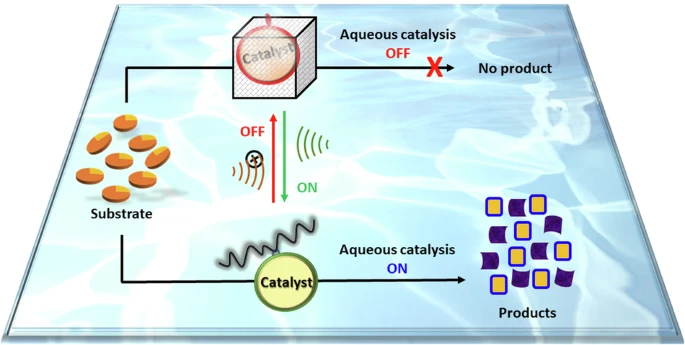
Comprehending Mechanical Force-Switchable Catalysis:
Mechanical force-switchable catalysis redefines conventional catalysis by incorporating a transformative element—mechanical force. Fundamentally, one can employ physical force, such as stretching, compression, or shear, to either activate or deactivate a catalyst. Consider it analogous to a light switch—by exerting or alleviating mechanical force, one can activate or deactivate the catalyst.
This form of catalysis is particularly attractive in dynamic settings that need meticulous regulation of reaction conditions. It resembles the ability to initiate or terminate a chemical reaction with the flick of a switch, providing unparalleled versatility.
Aqueous Organocatalysis: An Eco-Friendly Method
Aqueous organocatalysis entails conducting reactions in water, a sustainable and eco-friendly solvent. In a world increasingly focused on the environmental ramifications of chemical operations, using water as a solvent represents a significant advancement. In contrast to Aqueous Organocatalysis conventional organic solvents, water is non-toxic, abundantly accessible, and reduces the generation of hazardous waste.
Combining mechanically switchable catalysis and aqueous organocatalysis could help the development of next-generation green chemistry, which aims to reduce or get rid of the use of harmful chemicals in chemical processes. A schematic for mechanical force-switchable aqueous organocatalysis.

Mechanism of Mechanical Force-Activated Organocatalysis:
What is the precise operation mechanism for this? The essence resides in mechanophores, which are molecular entities that react to mechanical stress. These mechanophores undergo conformational changes when mechanical force is applied, resulting in the cleavage or formation of chemical bonds that either activate or deactivate the catalyst. The capacity to alternate between active and inactive states provides chemists with exceptional control over reaction kinetics.
Categories of Mechanophores in Aqueous Organocatalysis:
Mechanophores are specifically engineered molecules that respond to mechanical stress. Notable examples encompass spiropyrans and cyclobutanes, both of which demonstrate structural alterations upon stress exposure. The meticulous choice of mechanophores enables chemists to precisely adjust the catalytic system’s response according to the unique requirements of the reaction.
Applications of Mechanical Force-Switchable Organocatalysis:
The potential uses of this technology are numerous:
Industrial manufacturing: On-demand catalysis can diminish the time and energy necessary for industrial-scale manufacturing.
Pharmaceuticals: The ability to meticulously regulate reaction pathways can lead to more efficient medication production.
Environmental chemistry: Reduced waste and energy consumption make this methodology appealing for ecologically conscious chemical operations. Ultrasound-triggered organocatalysis using (non-covalent)catalyst system.

Benefits of Mechanical Force-Switchable Organocatalysis:
The ability to regulate the timing and manner of a reaction offers a multitude of benefits, including:
Precision: You can precisely halt or initiate reactions when needed.
Minimized waste: Controlling catalyst activation reduces side reactions.
Energy efficiency: Mechanical force is frequently more straightforward than thermal or chemical activation methods, thereby improving process energy efficiency.
Obstacles in Mechanical Force-Switchable Organocatalysis:
Despite the technology’s potential, numerous difficulties persist:
Application of mechanical force: Finding feasible and scalable methods for applying mechanical force in industrial environments remains a challenge.
Stability: Mechanophores must possess sufficient robustness to endure numerous cycles of activation and deactivation without deterioration.
Cost: In the short run, the development of mechanophores and specialized apparatus may incur significant expenses. Ultrasound-controlled organocatalysis using (covalent)catalyst system in aqueous media.

The Function of Aqueous Environments in Switchable Organocatalysis:
Water as a solvent enhances the sustainability of reactions and affects the reactivity of mechanophores under mechanical stress. Water often enhances the efficiency and selectivity of catalytic processes by stabilizing transition states and intermediates. Aqueous conditions promote eco-friendly chemical reactions, rendering them suitable for large-scale applications.
Contemporary Research Trends in Force-Switchable Catalysis:
This domain’s research is rapidly advancing. Researchers are investigating novel mechanophores that provide enhanced control and increased sensitivity to mechanical stress. Progress in materials science is facilitating more efficient and scalable implementations of mechanical force-switchable catalysis.
Experimental Methodologies in Investigating Force-Switchable Organocatalysis:
Researchers often use specialized tools like atomic force microscopy (AFM) and ultrasonication to study and use precise mechanical forces to switch between different types of catalysis. These instruments provide real-time monitoring of mechanophore activity under stress, yielding significant insights into the functionality of these systems.
Sustainability Considerations in Aqueous Organocatalysis:
This field’s notable characteristic is its ability to improve chemical process sustainability. Aqueous organocatalysis has the potential to be a fundamental aspect of the green chemistry movement because it removes harmful solvents and minimizes the need for energy-consuming activation techniques.
Prospective Trajectories and Advancements:
The prospects for mechanical force-switchable organocatalysis are promising. Ongoing research may lead to the development of novel catalyst designs that are adept at facilitating more intricate reactions. Incorporating renewable energy sources, such as solar or wind power, could significantly improve the sustainability of these systems. Ultrasound-induced reversible control over availability of organocatalyst for hydrolysis reaction in aqueous media.

Prospective Industrial Implementation:
Despite being in its nascent phase, sectors dependent on chemical processes—such as medicines, polymers, and food production—may significantly profit from the implementation of force-switchable systems. Organizations that use this technology may experience cost reductions and diminished environmental impact, in accordance with increasing demands for sustainable practices.
Final Assessment:
Mechanical force-switchable aqueous organocatalysis represents a significant advancement in chemistry. Researchers can improve the efficiency, sustainability, and controllability of chemical processes by combining organocatalysis concepts with mechanical force and aquatic conditions. Despite existing limitations, the future of this technology presents significant potential, especially for sectors aiming to minimize waste and adopt more sustainable practices.
Frequently Asked Questions:
1). What constitutes organocatalysis?
Small organic molecules are used in organocatalysis to speed up chemical reactions without using metals, which is an alternative to traditional catalysts.
2). What is the mechanism behind mechanical force-switchable catalysis?
Mechanical force-switchable catalysis changes the structure of mechanophores to make a catalyst work or not work by applying mechanical stress.
3). What is water’s purpose in aqueous organocatalysis?
Water is a sustainable, non-toxic solvent that improves reaction efficiency and minimizes environmental effects.
4). What are mechanophores?
Mechanophores are molecular entities that alter their shape in response to mechanical force, hence modulating catalytic activity.
5). Which industry could benefit from force-switchable organocatalysis?
The pharmaceuticals, industrial manufacturing, and environmental chemical sectors could gain from the precision and sustainability offered by this technology.
For more chemistry blogs, visit chemistry Master

